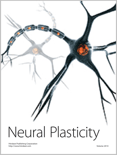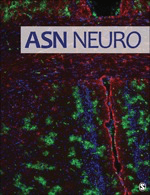
NEURAL PLASTICITY
Scope & Guideline
Elevating the Standards of Neurological Research
Introduction
Aims and Scopes
- Neuroplasticity Mechanisms:
Investigates the cellular and molecular underpinnings of neuroplasticity, including synaptic changes, neuronal regeneration, and the role of various signaling pathways. - Clinical Applications:
Explores therapeutic interventions, such as transcranial magnetic stimulation (TMS), transcranial direct current stimulation (tDCS), and acupuncture, in treating neurological disorders and enhancing recovery. - Neuroimaging Studies:
Utilizes advanced neuroimaging techniques (e.g., fMRI, EEG) to assess functional and structural brain changes, elucidating the neural correlates of neuroplasticity in both healthy individuals and clinical populations. - Behavioral and Cognitive Outcomes:
Examines how neuroplastic changes manifest in behavioral and cognitive improvements, particularly in conditions like stroke, chronic pain, and neurodegenerative diseases. - Comparative and Systematic Reviews:
Conducts thorough reviews and meta-analyses to synthesize findings from various studies, providing insights into effective interventions and mechanisms related to neuroplasticity.
Trending and Emerging
- Interventional Neuroscience:
A marked increase in studies focusing on innovative interventional techniques, such as advanced tDCS protocols and novel acupuncture methods, showcases a growing interest in practical applications for enhancing neuroplasticity. - Neuroinflammation and Pain Modulation:
Research exploring the interplay between neuroinflammation, pain, and neuroplasticity is on the rise, reflecting a deeper understanding of how inflammatory processes influence neural adaptation. - Personalized Medicine Approaches:
Emerging themes around personalized medicine, particularly in the context of tailored neurorehabilitation strategies, are becoming more prominent, indicating a shift toward individualized treatment plans based on specific patient needs. - Integration of Machine Learning and AI:
The use of machine learning and artificial intelligence in analyzing neuroimaging data and predicting treatment outcomes is increasingly featured, highlighting a trend towards incorporating advanced computational techniques in neuroscience research. - Psychological and Cognitive Factors in Rehabilitation:
There is a growing emphasis on the psychological and cognitive aspects of rehabilitation, including how mental health, coping strategies, and cognitive load affect neuroplastic processes and recovery outcomes.
Declining or Waning
- Basic Animal Model Studies:
There seems to be a gradual decline in the publication of studies primarily focused on basic animal models without translational components, as the journal shifts towards more clinically relevant research. - Single Modality Interventions:
Research focusing solely on single modality interventions (e.g., only using TMS or tDCS without integrated approaches) is less frequent, indicating a move towards more holistic and multifaceted treatment strategies. - Exploratory Studies without Clear Outcomes:
Exploratory studies that do not yield clear or actionable outcomes may be decreasing in prevalence, as the journal emphasizes studies with robust methodologies and impactful findings.
Similar Journals

JOURNAL OF COGNITIVE NEUROSCIENCE
Illuminating the connections between brain and behavior.Welcome to the JOURNAL OF COGNITIVE NEUROSCIENCE, a premier publication in the field of cognitive neuroscience, published by the esteemed MIT PRESS. Since its inception in 1989, this journal has been at the forefront of advancing our understanding of the neural mechanisms underlying cognitive processes, boasting an impressive convergence period through 2024. With its Q1 ranking in the 2023 cognitive neuroscience category, it stands out among 115 peers, indicating its critical role in shaping contemporary research. The journal offers a comprehensive array of research articles, reviews, and methodologies aimed at researchers, professionals, and students alike, facilitating the exploration of complex cognitive functions. While not an open-access journal, it provides essential insights and significant contributions to the neuroscience community, making it an invaluable resource for anyone keen on delving into the intricacies of the human brain.

Frontiers in Systems Neuroscience
Unlocking the secrets of neural systems.Frontiers in Systems Neuroscience is a premier open-access journal published by FRONTIERS MEDIA SA, dedicated to advancing the understanding of the complex systems that underpin neural function and behavior. Established in 2007 and based in Switzerland, this journal has gained recognition for its rigorous peer-reviewed articles that contribute significantly to the fields of Cellular and Molecular Neuroscience, Cognitive Neuroscience, and Developmental Neuroscience. As of 2023, it proudly holds a Q2 ranking in several neuroscience categories, reflecting its high impact and relevance in the academic community. The journal is accessible to researchers, professionals, and students worldwide, providing a platform for innovative research while promoting collaborative scientific dialogue. With a commitment to open access, Frontiers in Systems Neuroscience ensures that groundbreaking findings are readily available to enhance knowledge sharing across the globe. This makes it an essential resource for anyone looking to stay at the forefront of neuroscience research.

IBRO Neuroscience Reports
Innovating the future of brain research.IBRO Neuroscience Reports, published by Elsevier, is a pivotal open-access journal dedicated to advancing the field of neuroscience. With its ISSN 2667-2421, the journal serves as a vital platform for researchers, professionals, and students alike, showcasing innovative research and interdisciplinary studies that span various aspects of neuroscience. Since its inception in 2021, and with a planned convergence through 2024, the journal has quickly established itself within the academic community, currently holding a Q3 category ranking in the field of Neuroscience (miscellaneous) and a Scopus rank of #77 among 113 in General Neuroscience, reflecting its ongoing commitment to quality and relevance. The accessibility of research articles ensures that critical findings are widely disseminated, fostering collaboration and dialogue within the neuroscientific community. Researchers and professionals are encouraged to contribute to this dynamic journal, reinforcing its role in shaping the future of neuroscience research.

ASN Neuro
Unlocking the Mysteries of the Mind Through Open AccessASN Neuro is an esteemed academic journal published by Frontiers Media SA, focusing on critical advancements in the fields of neurology and neuroscience. Since its inception in 2009, it has established itself as an Open Access platform dedicated to fostering the dissemination of knowledge and research findings that address the complexities of the nervous system. With an impressive impact factor and consistently ranking in the top quartiles of its categories—Q1 in Neurology (clinical) and Q2 in Neuroscience (miscellaneous)—ASN Neuro is recognized for its high-quality publications that cater to the evolving challenges in clinical neurology and general neuroscience. Currently, it ranks 68th out of 400 journals in Clinical Neurology and 28th out of 113 in General Neuroscience, affirming its reputable position within the academic community. Researchers, professionals, and students alike are encouraged to contribute to and benefit from this impactful journal as it presents a unique opportunity to engage with cutting-edge research, innovative methodologies, and insightful reviews in the ever-evolving landscape of brain science.

NEUROSCIENCE RESEARCH
Unveiling the Mysteries of the MindNEUROSCIENCE RESEARCH, published by Elsevier Ireland Ltd, is a leading journal in the field of neuroscience, with a notable reputation for disseminating high-quality research that spans a variety of topics within the discipline. With an ISSN of 0168-0102 and an E-ISSN of 1872-8111, this journal serves as a vital platform for both established researchers and emerging voices in the field. Ranking in the Q2 quartile in both Medicine and Neuroscience categories, it has been recognized as a reliable source of innovative findings since its inception in 1984, with continuous publication through 2024. Although it does not currently offer Open Access options, the journal is indexed in Scopus, holding a significant position at Rank #48/113 in General Neuroscience, reflecting its contribution to advancing the understanding of neural mechanisms across various contexts. With its address anchored in Ireland, NEUROSCIENCE RESEARCH plays an essential role in bridging scientific inquiry and practical applications, making it an indispensable resource for researchers, professionals, and students dedicated to the burgeoning field of neuroscience.

Brain and Behavior
Connecting Minds: Where Neuroscience Meets Behavior.Brain and Behavior is a premier open-access journal published by WILEY, dedicated to advancing the field of Behavioral Neuroscience. With its ISSN 2162-3279, the journal has established itself as a vital resource for researchers, professionals, and students alike, fostering the dissemination of cutting-edge research since its inception in 2011. Renowned for its rigorous peer-review process, it enjoys a commendable Q2 ranking within the field, reflecting its impactful contributions and relevance in the scientific community. The journal not only emphasizes innovative studies that bridge behavioral science and neuroscience but also serves as a platform for diverse methodologies and interdisciplinary approaches. Accessible [open access](https://onlinelibrary.wiley.com/journal/21623279), Brain and Behavior invites submissions that explore the neural mechanisms underlying behavior, aiming to engage a global audience eager to expand the boundaries of knowledge in this dynamic field. Positioned in the heart of the United States, at 111 River St, Hoboken, NJ, it is strategically placed to collaborate with leading institutions and researchers worldwide.

EXPERIMENTAL NEUROLOGY
Unveiling the Complexities of the Nervous System.EXPERIMENTAL NEUROLOGY is a premier academic journal published by Academic Press Inc, Elsevier Science, focusing on advancements in the fields of Developmental Neuroscience and Neurology. With an impressive Impact Factor and ranked in the Q1 quartile of both categories—positioning it among the top-tier journals—this publication has established itself as a vital resource for researchers, clinicians, and students alike. Since its inception in 1959, it has fostered the dissemination of cutting-edge research and innovative approaches to understanding neurological function and related disorders. While EXPERIMENTAL NEUROLOGY currently operates under a subscription access model, its rich archives and ongoing contributions to the field continue to inspire and inform the next generation of neurobiologists. The journal also boasts a high ranking in Scopus, placing fourth in Developmental Neuroscience and twentieth in Neurology, indicating its robust influence and scholarly significance. For those committed to advancing knowledge in these critical areas, EXPERIMENTAL NEUROLOGY is an indispensable platform for inquiry and discovery.

Frontiers in Neuroscience
Bridging knowledge gaps in neuroscience.Frontiers in Neuroscience, published by FRONTIERS MEDIA SA, is a premier open-access journal dedicated to advancing our understanding of the nervous system through innovative and rigorous research. Since its inception in 2007, this journal has become an influential platform for researchers, featuring a diverse range of topics across various subfields of neuroscience. With its current ranking in the second quartile (Q2) of the category "Neuroscience (miscellaneous)" and a commendable position of #40 out of 113 in general neuroscience according to Scopus, Frontiers in Neuroscience is recognized for its high-impact contributions. The journal promotes free access to scholarly work, ensuring that cutting-edge neuroscience studies reach a global audience and foster collaboration across disciplines. By bridging gaps in knowledge and facilitating the exchange of ideas, Frontiers in Neuroscience plays a pivotal role in addressing the complexities of the nervous system and its effects on behavior, cognition, and health.

NATURE NEUROSCIENCE
Shaping the Future of Neuroscience, One Article at a TimeNATURE NEUROSCIENCE is a premier journal published by NATURE PORTFOLIO, focusing on cutting-edge research in the field of neuroscience. With an esteemed impact factor that reflects its significance in the academic community, this journal occupies an exceptional place in the 2023 Q1 category for neuroscience (miscellaneous) and boasts a leading Scopus rank of #1 out of 113 in general neuroscience, placing it within the top 1st percentile. Since its inception in 1998, NATURE NEUROSCIENCE has consistently delivered high-quality, peer-reviewed articles that contribute to our understanding of the nervous system, driving innovation and scholarship across disciplines. Although it does not offer open access, the journal remains a vital resource for researchers, professionals, and students seeking to stay at the forefront of neuroscientific discovery and discussion. Its editorial commitment to excellence ensures that it continually shapes the trajectory of neuroscience research well into 2024 and beyond, making it an indispensable asset for anyone passionate about the brain and its complexities.

NEUROMODULATION
Exploring Innovations in Pain and AnesthesiaNEUROMODULATION is a premier academic journal dedicated to advancing the fields of anesthesiology, pain medicine, and neurology. Published by Elsevier, this prestigious journal has consistently maintained a high impact factor, reflecting its relevance and influence in the medical community. With a commendable track record spanning from 1998 to 2024, NEUROMODULATION is classified in the Q1 quartile for both Anesthesiology and Pain Medicine and Medicine (miscellaneous), demonstrating its excellence among top-tier journals. Additionally, it ranks in the Q2 quartile for Neurology and Clinical Neurology, showcasing a broad appeal across multiple disciplines. The journal's substantial Scopus rankings—22nd out of 136 in Anesthesiology and Pain Medicine and 93rd out of 400 in Clinical Neurology—underscore its critical role in disseminating cutting-edge research and clinical findings. NEUROMODULATION endeavors to provide a robust platform for researchers, clinicians, and students to explore innovative therapeutic approaches and the complexities of neural modulation, ultimately contributing to improved patient outcomes and advancing the state of medical science.